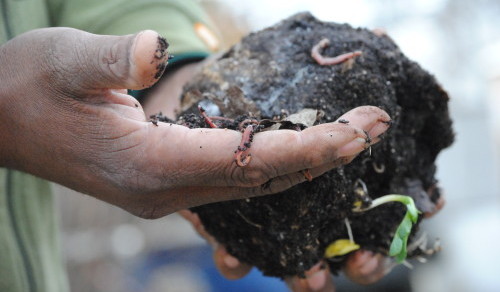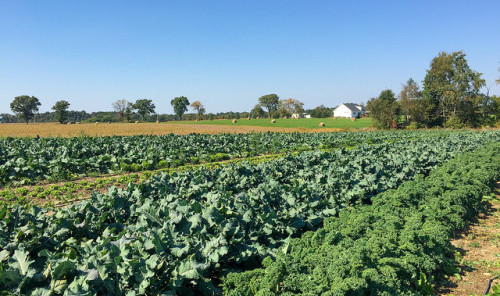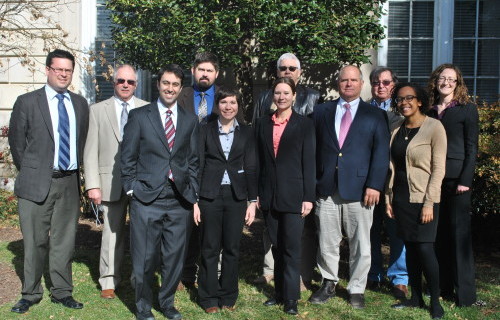With the end of the year just around the corner, we wanted to reflect on all that we have to be grateful for in 2015. There’s a lot to celebrate! From promoting conservation to empowering beginning farmers, here is our list of the “Top 15” highlights of 2015:
Conservation & Environment

1. 2015 opened with the first ever Conservation Stewardship Program (CSP) contract renewals. CSP, a program that NSAC has championed, is the only farm bill conservation program to support performance-based advanced conservation systems for working farms. 70 percent of expiring acres were renewed by producers ensuring that more than 17 million acres will continue to be supported through new and ongoing conservation activities. The year also ended on a high note for CSP: the Natural Resources Conservation Service (NRCS) postponed the CSP overhaul until 2017, buying more time for stakeholder input and outreach around the changes, and just this week Congress approved an omnibus budget bill that eliminated House-proposed cuts to CSP funding in 2016.
2. NSAC member organizations and supporters submitted hundreds of comments to USDArecommending ways to improve the interim rules to implement 2014 Farm Bill changes to conservation programs, including the CSP, the Environmental Quality Incentives Program (EQIP),Agricultural Conservation Easements Program (ACEP), conservation compliance, and theConservation Reserve Program (CRP).
3. The NRCS collaborated with NSAC and several NSAC member organizations to publish a new organic handbook. This handbook will serve as a resource to help NRCS field staff work more effectively with organic and transitioning organic producers.
4. This year saw the highest ever Continuous Conservation Reserve Program (CCRP) enrollment, a program that NSAC was instrumental in starting in the 1990s and preserving over time. For 2015, over 750,000 acres were enrolled, pushing current contracts to over six million acres that reduce erosion, improve water quality, and restore wildlife habitat. CRP participants whose contracts expired this year received a letter from the FSA, as recommended by NSAC, highlighting some excellent options that would allow them to keep managing their land with conservation in mind, including enrolling conservation buffers in the CCRP.
Farming Opportunities

5. USDA’s Farm Service Agency expanded the Farm Storage Facility Loan program to provide affordable financing to farmers to build or upgrade storage for meat, dairy, and eggs. FSA also increased the financing options for produce growers using Farm Storage Facility Loans and Microloans. NSAC played an important role in pushing for and promoting these new options for farmers growing for the local and regional food market.
6. USDA’s Risk Management Agency announced the expansion of Whole Farm Revenue Protection to every county in every state, becoming the first crop insurance policy in history to be available everywhere. New changes to the WFRP crop insurance program — all proposed by NSAC and NSAC member groups — also improved coverage for mid-size integrated grain and livestock operations, streamlined record keeping for farmers selling to direct markets, and made it somewhat easier for beginning farmers to participate.
7. NSAC member organizations received over four million dollars through the Beginning Farmer and Rancher Development Program (BFRDP) to train new farmers. BFRDP, the only federal program exclusively dedicated to training the next generation of farmers and ranchers, was developed and championed by NSAC.
Food Safety

8. The Food and Drug Administration released the much-anticipated final Produce Rule and Preventive Controls Rule authorized under the Food Safety Modernization Act (FSMA), which (among other wins) include a significantly improved definition of “farm” shaped by input from farmers and the sustainable agriculture community.
9. The omnibus budget bill just passed by Congress doubles funding for the Food Safety Outreach Program (FSOP) to $5 million. FSOP is a competitive grants program, developed and championed by NSAC and authorized under FSMA, that funds farmer and food hub training efforts. In addition to the funding increase, the budget bill also directs USDA to focus funds on organizations that work directly with owners and operators of small and mid-sized farms to provide on-the-ground farmer food safety training.
Marketing, Food Systems, & Rural Development

10. Thanks to the leadership of Senators Patrick Leahy (D-VT) and Thad Cochran (R-MS) and Representatives Jeff Fortenberry (R-NE) and Marcia Fudge (D-OH), the Farm to School Act of 2015 was introduced in both the House and the Senate as a bipartisan bill. The bill, championed by NSAC and the National Farm to School Network, is expected to become part of the Child Nutrition Act reauthorization to be taken up by Congress early in the new year.
11. Ten NSAC member groups received Farmers Market & Local Food Promotion Program and SNAP Farmers Market Support grants for their work supporting local food systems and food access. Sixty Value-Added Producer Grants were awarded to projects marketing food locally, and at least twenty-three were awarded to organic producers. Ensuring that farmers and sustainable food and agriculture groups benefit from NSAC’s work developing and winning congressional support for our programs is an important part of our extensive farm bill implementation efforts.
Research, Education, & Extension

12. The Sustainable Agriculture Research and Education (SARE) Program, the first ever program NSAC championed at the very start of its existence as an organization, received the greatest amount of funding ever for 2016 through Congress’ omnibus budget bill. We highlighted the successes of beginning farmers and women farmers using the SARE program who found ways to increase their bottom line while developing financially sound and environmentally sustainable farm businesses.
13. The USDA Organic Production Survey, the first comprehensive snapshot of organic agriculture since 2008, provided important trend data on the organic industry.
14. NSAC helped to organize a briefing on Capitol Hill for legislators and decision-makers on public plant breeding to showcase the importance of public agricultural research in developing new plant varieties that address key concerns for farmers.
Farmer Advocacy

15. In March, six independent family farmers came to DC as part of an NSAC fly-in to share their stories with members of Congress. They discussed the importance of federal funding for programs focused on conservation, research, and food safety outreach. NSAC organizes fly-ins on a regular basis so that policy makers hear directly from farmers about their program needs and policy recommendations; this was one of three fly-ins in 2015 – in total, over 40 farmers, ranchers, and advocates traveled to DC with NSAC this year!
We could not achieve all of these successes without the continuous support and hard work of our members, allies and supporters, so thank you!

